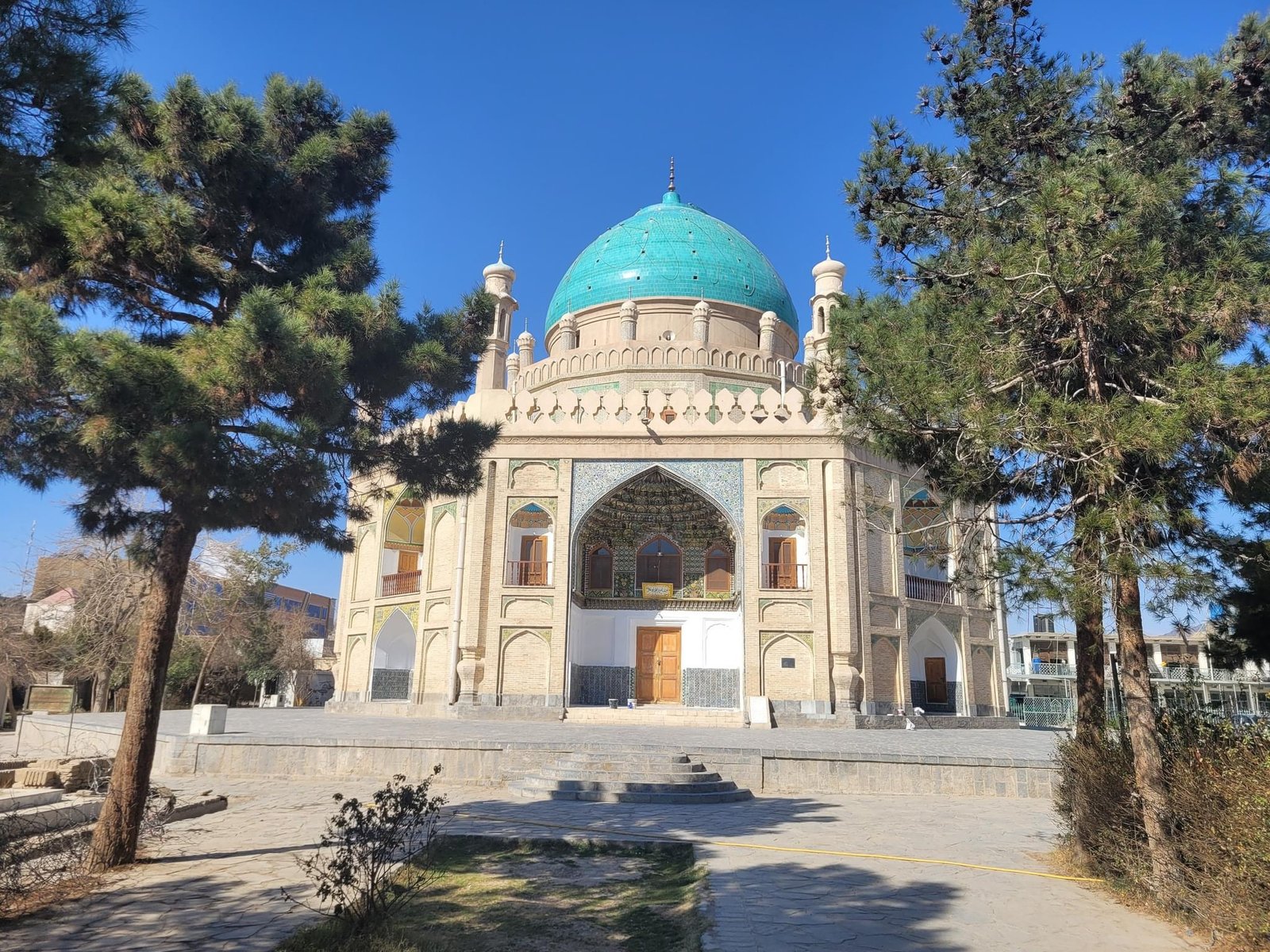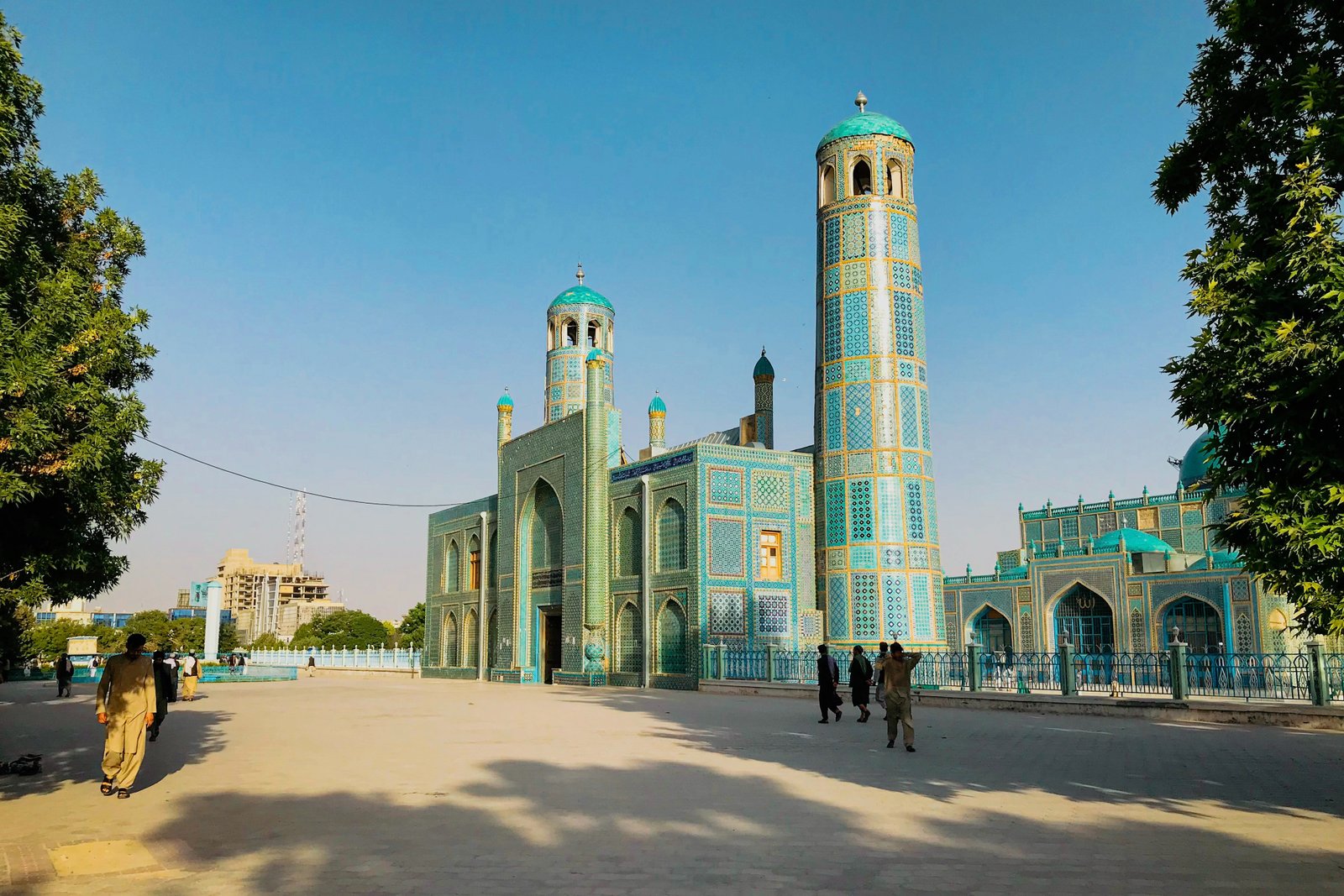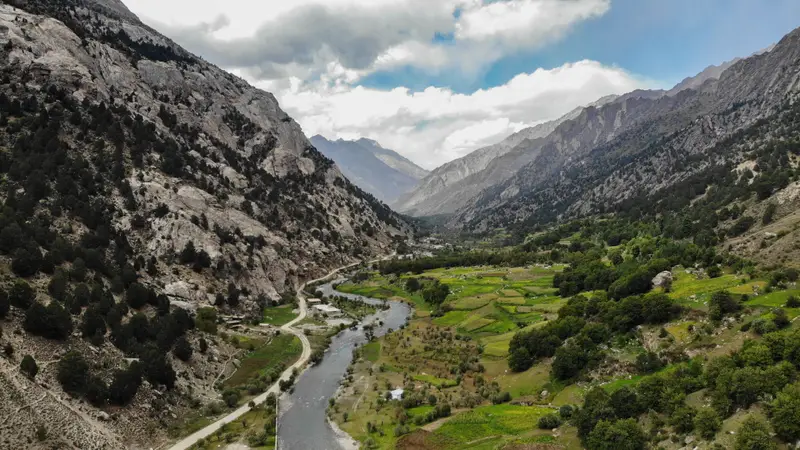
Kandahar
The Pomegranate land
Kandahar Province, also spelled Qandahar is located in southern Afghanistan. Kandahar borders Pakistan in the east and south, Uruzgan and Zabul provinces in the north, and Helmand in the west. The topography is composed of deserts in the south, hills in the north, and mountainous terrain along the Pak border in Spin Boldak. It is southern Afghanistan’s chief commercial center and is situated at the junction of highways from Kabul, Herat, and Quetta (Pakistan).
Kandahar has an international airport, though it has traditionally been used for domestic flights. The strategic and commercial importance of the site, on main routes via Herat to Central Asia, to Kabul, and to India, explains its long history of conquests and frequent reboundings.
Top Sights of Kandahar
Mosque of the Cloak (Kirqa Sharif)
Khirqa Sharif (Shrine of the Cloak) is an Islamic shrine located in present-day Kandahar, Afghanistan. The shrine became notable in literature during the Second Anglo-Afghan War when the British Indian Army was trying to gain influence in Afghanistan. Khirqa-Sharifa is one of the most sacred memorabilia in Islamic history. It is believed that the Prophet wore it on Isra' and Mi'raj, the Night Journey, in the company of the archangel Jibril (A.S), in 621 AD. It is hosted in a mosque next to the mausoleum of the Afghan King, Ahmad Shah Durrani, in Kandahar, Afghanistan.
Mosque of the hair of Prophet Mohammad PBUH
The Mosque of the Hair of the Prophet, also known as Jame Mui Mobarak, is a mosque near the Kabul Bazaar, in the city of Kandahar, Afghanistan. The mosque was built in the 19th century. A canal runs through the mosque's shaded courtyard. At one point, there was a traveler’s rest house there. The hair of Muhammed contained in the mosque was brought to Kandahar at the same time that the cloak of Muhammed was brought to the Mosque of the Cloak of the Prophet Mohammed. The hair is kept in a side chapel in a golden sheath in a casket piled over with holy blankets and banners.
Ahmad Shah Durrani Mausoleum
The Tomb of Ahmad Shah Durrani is located in Kandahar, Afghanistan. It is the most important historical monument in Kandahar. Ahmad Shah Durrani, fondly known as Ahmad Shah Baba, Father of Afghanistan, ruled an empire from Kandahar from 1747-1772. The founder of the Durrani monarchy, Ahmad Shah was revered by Afghans as their greatest monarch, combining military skill with a decisive character and the virtue of clemency. One of his most famous feats was the conquest of Delhi and the defeat of the Maratha forces in India at the Third Battle of Panipat in 1761.
Chil Zina
Chil Zina ("Forty steps"), also Chil Zina or Chehel Zina, is a mountainous outcrop at the western limit of the city of Kandahar. Forty stone steps lead to the top of the outcrop, hence its name. It gives a commanding view of the city of Kandahar. Chil Zina was located on the northern side of the old citadel of Old Kandahar, destroyed by Nadir Shah Afshar of Persia in 1738. The carving of the staircase was commissioned by the emperor Babur. Chil Zina later received numerous inscriptions about the conquests of Babur (1526-1530), apparently carved by his son Humayun.
Chil Zina is well known for the discovery of the Indian Emperor Ashoka's Kandahar Bilingual Rock Inscription on the mountainside, which is still located in an open-air compound on the mountainside. The presence of this inscription at Chil Zina helped confirm the presence of Greek populations in the vicinity in the 3rd century BCE, as well as the extent of Ashoka's control, which is therefore thought to have incorporated Kandahar and its region of Arachosia.
Aino Mena
Aino Mena a township in Kandahar is considered a leading example of reconstruction and development in Afghanistan. Aino Mina is a culturally appropriate suburban development, showing the potential of the emerging Afghan economy and creating over 2,000 new homes. The construction of this township has brought about positive changes to the lives of hundreds of people in the area.
Dehla Dam
The Dahla Dam, also known as Arghandab Dam and Kasa, is located in the Shah Wali Kot District of Kandahar Province in Afghanistan, approximately 40 kilometers (25 mi) north of the provincial capital Kandahar. Constructed in 1952, it is said to be the second-largest dam in Afghanistan. The Dahla Dam is built on the Arghandab River which flows over a length of 250 miles (400 km).
Kandahar Museum
Kandahar Museum is one of the museums in Afghanistan that preserves the historical works from 4000 AD to 8000 AD and the works of six historical periods are kept in this museum. Currently, 850 types of historical artifacts are stored in the Kandahar National Museum, they are related to the Stone, Bronze, Kushan, Islamic, and contemporary periods. According to the officials of this museum.
People’s interest in visiting monuments has increased and dozens of people visit Kandahar National Museum every day. National and foreign visitors come to Kandahar Museum to see the works of the historical period and visit this place. Those who visit the Kandahar National Museum want to preserve and enrich the works of this museum.
Other attractions in Kandahar Province
• Sra Jama or Red Mosque
• Sarposa Bazar
• Mausoleum of Mirwais Khan Hotak
• Mausoleum of Baba Wali Kandahari
• Zor Shar
• Eid Gah Mosque



